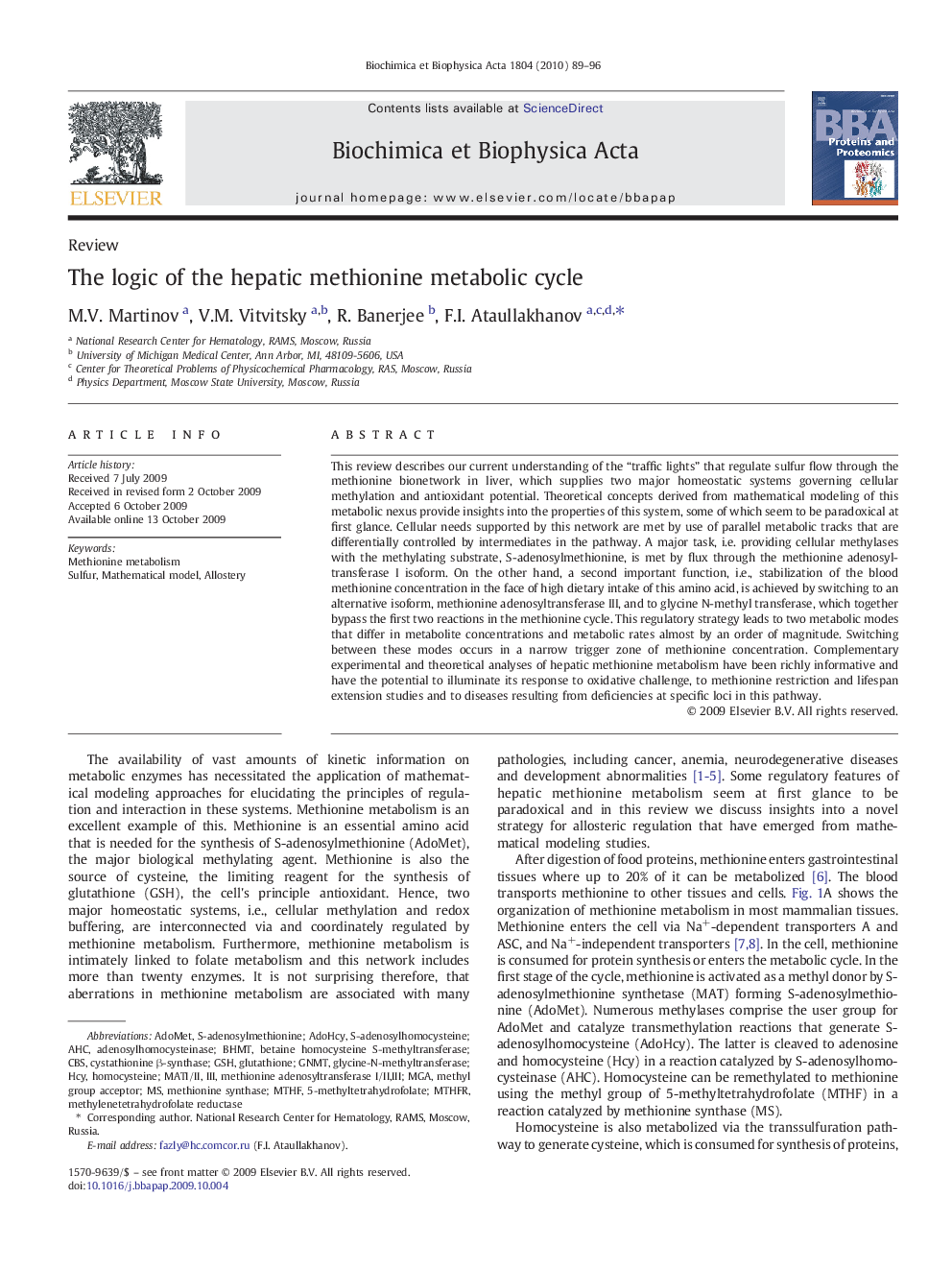| Article ID | Journal | Published Year | Pages | File Type |
|---|---|---|---|---|
| 10536964 | Biochimica et Biophysica Acta (BBA) - Proteins and Proteomics | 2010 | 8 Pages |
Abstract
This review describes our current understanding of the “traffic lights” that regulate sulfur flow through the methionine bionetwork in liver, which supplies two major homeostatic systems governing cellular methylation and antioxidant potential. Theoretical concepts derived from mathematical modeling of this metabolic nexus provide insights into the properties of this system, some of which seem to be paradoxical at first glance. Cellular needs supported by this network are met by use of parallel metabolic tracks that are differentially controlled by intermediates in the pathway. A major task, i.e. providing cellular methylases with the methylating substrate, S-adenosylmethionine, is met by flux through the methionine adenosyltransferase I isoform. On the other hand, a second important function, i.e., stabilization of the blood methionine concentration in the face of high dietary intake of this amino acid, is achieved by switching to an alternative isoform, methionine adenosyltransferase III, and to glycine N-methyl transferase, which together bypass the first two reactions in the methionine cycle. This regulatory strategy leads to two metabolic modes that differ in metabolite concentrations and metabolic rates almost by an order of magnitude. Switching between these modes occurs in a narrow trigger zone of methionine concentration. Complementary experimental and theoretical analyses of hepatic methionine metabolism have been richly informative and have the potential to illuminate its response to oxidative challenge, to methionine restriction and lifespan extension studies and to diseases resulting from deficiencies at specific loci in this pathway.
Keywords
Related Topics
Physical Sciences and Engineering
Chemistry
Analytical Chemistry
Authors
M.V. Martinov, V.M. Vitvitsky, R. Banerjee, F.I. Ataullakhanov,
